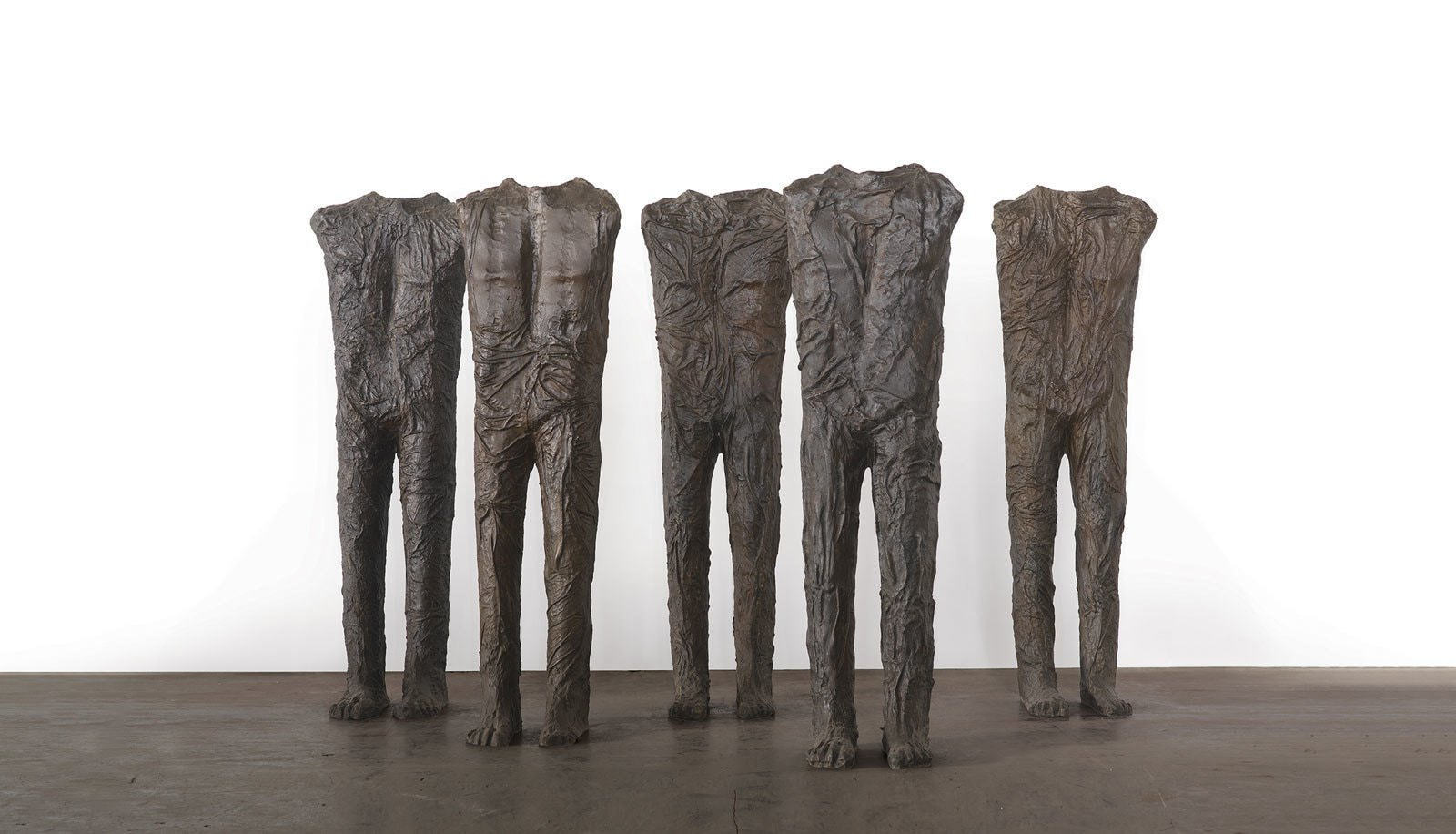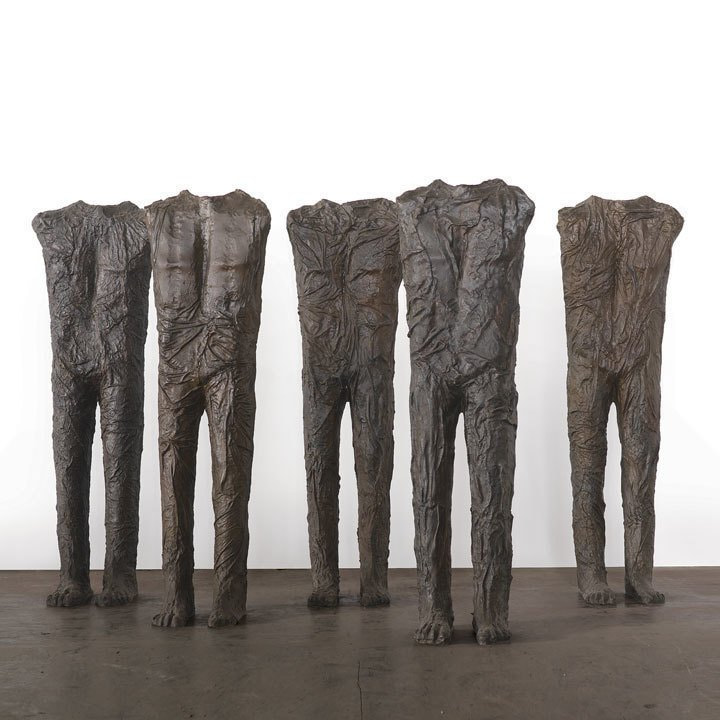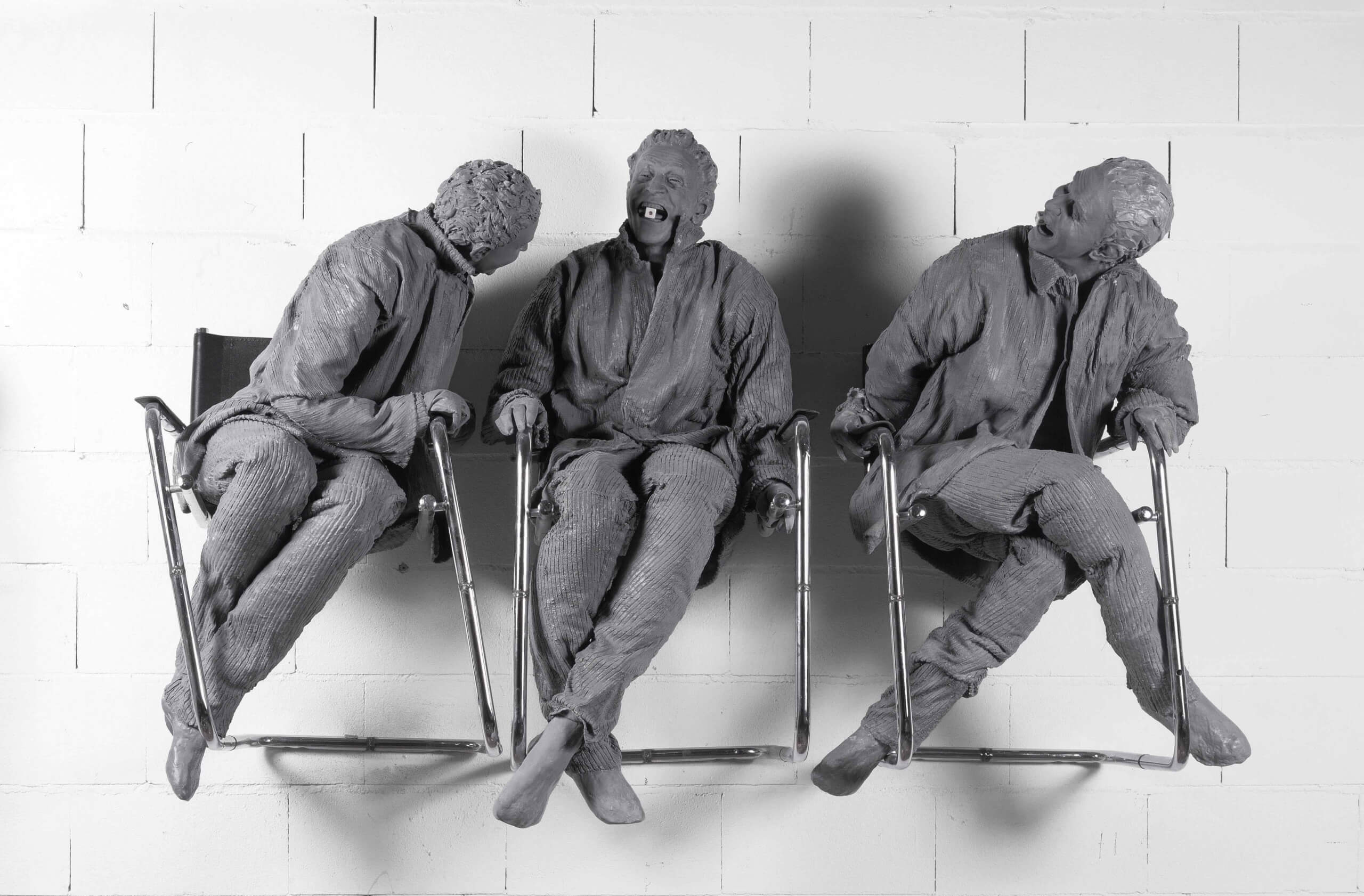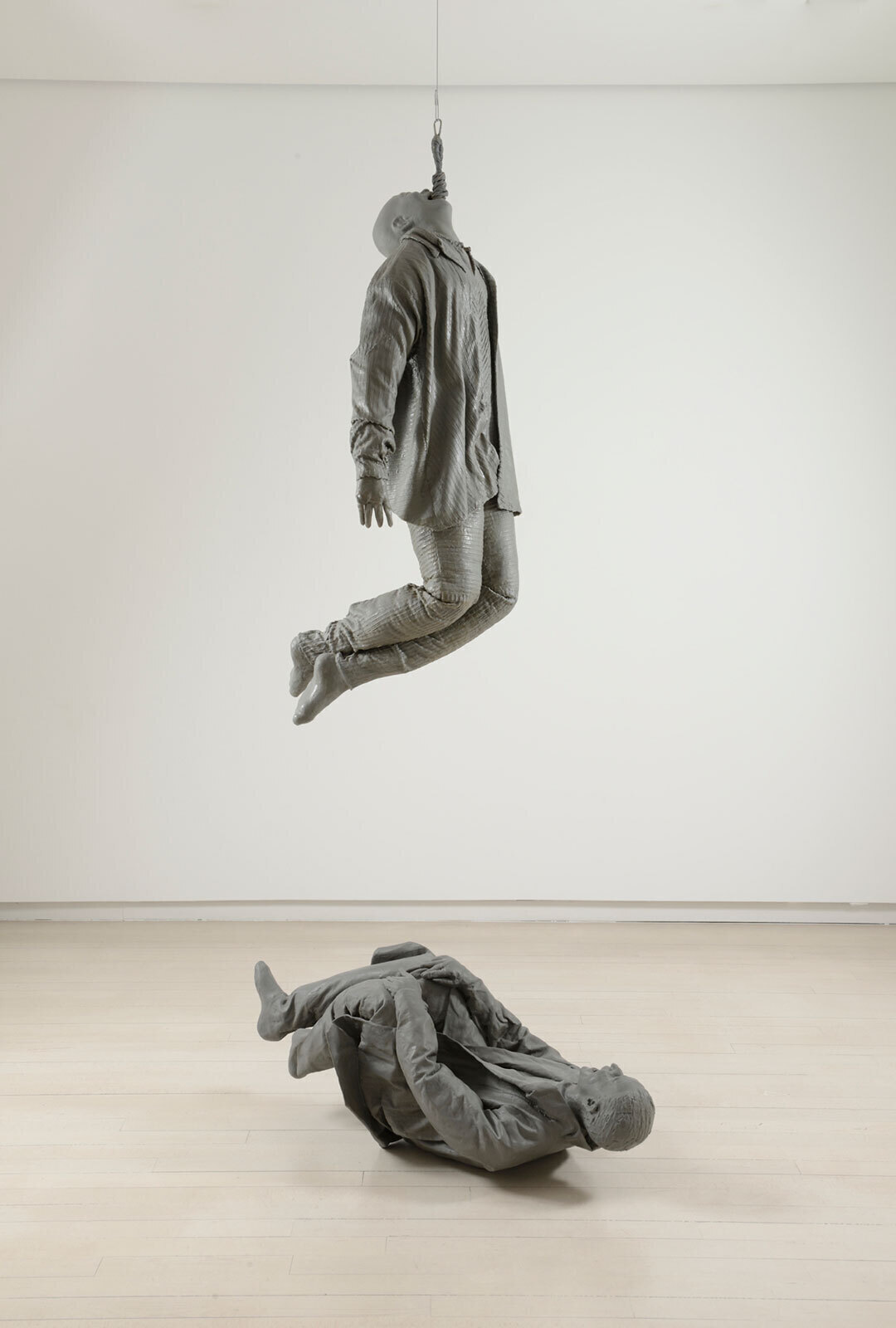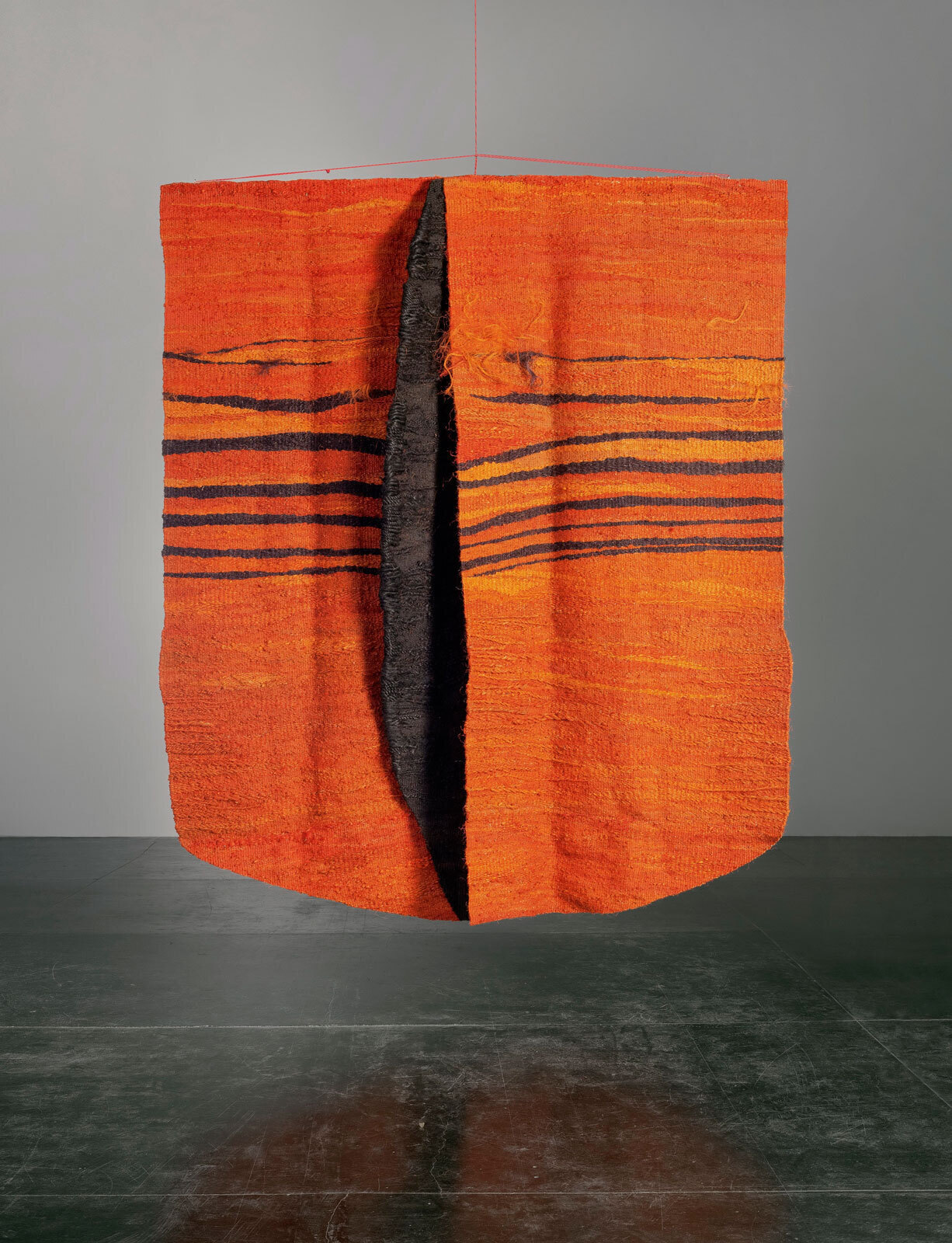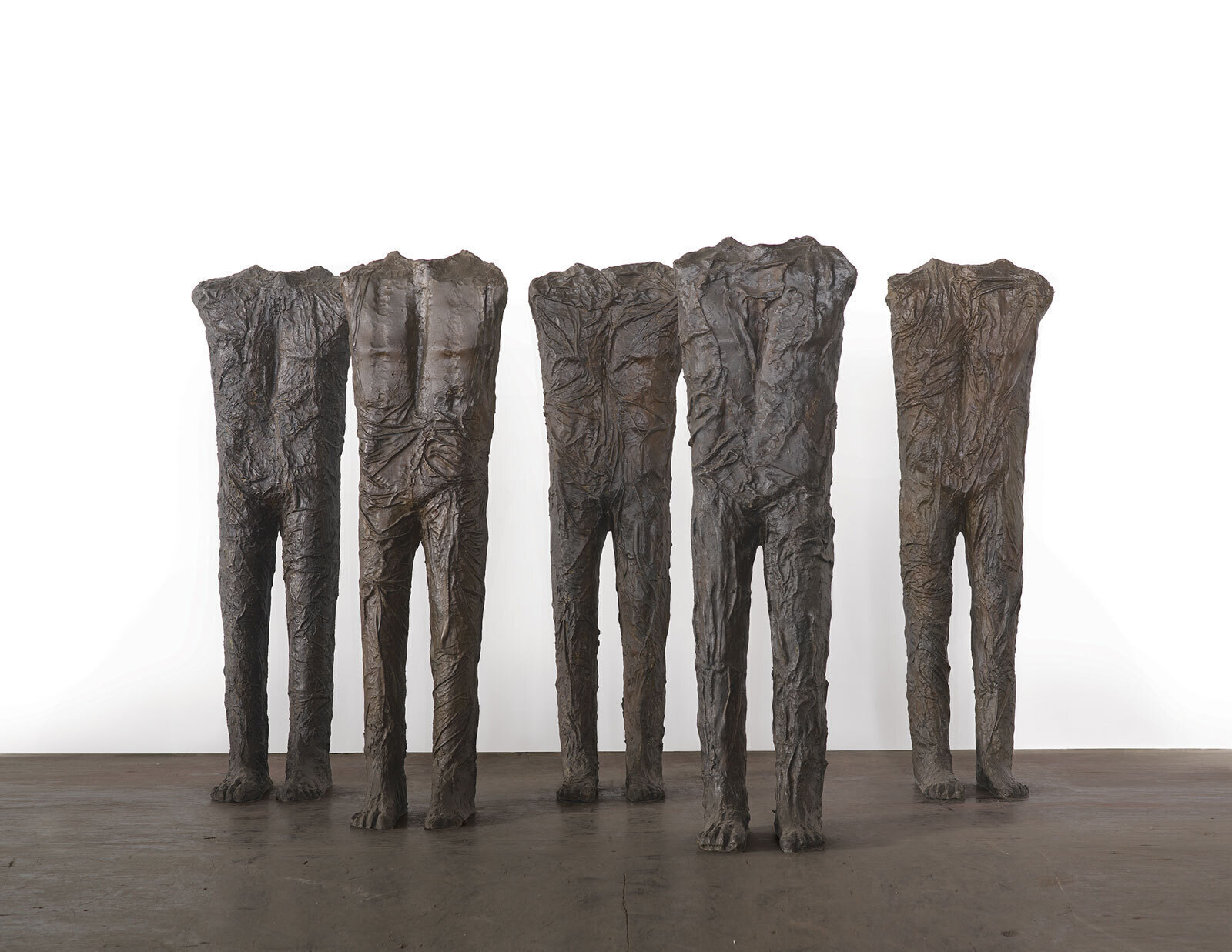In her next lecture Irina Kulik will concentrate on some of the most striking examples of postwar figurative sculpture.
A major figure in Poland’s postwar art, Magdalena Abakanowicz (1930–2017)was a sculptor and university professor teaching in Poznań and Los Angeles. Using textiles and fiber as her favorite materials, she created monumental sculptural installations of headless people, anthropomorphic and zoomorphic objects. Largely informed by her life in Soviet Poland, marked by political repressions and constant control from the USSR, Abakanowicz’s practice was a search for universal human meanings, an exploration of the role and fate of an individual in a society, and an inquiry into historic and cultural memory. The National Museum in Wrocław, Poland, currently has the largest collection of the artist’s works, whose exhibitions were held and continue to open worldwide.
One of the most gifted sculptors of his generation, Madrid born Juan Muñoz (1953–2001)received his art education in London and New York before moving back to his home country. Working a lot with resin and paper maché and influenced by minimalism and arte povera, he developed a highly recognizable individual style towards the late 1980s. Muñoz’s signature works depicting smaller than life-size single human figures or groups, installed in public as well as museum spaces, suggested a new take on figurative sculpture, recharging it with humor, poetry, and playfulness. Muñoz exhibited at world-leading venues throughout his life which ended abruptly at the age of only forty-eight due to a cardiac arrest. Along with sculpture, he is famous for drawings and radio programs.
